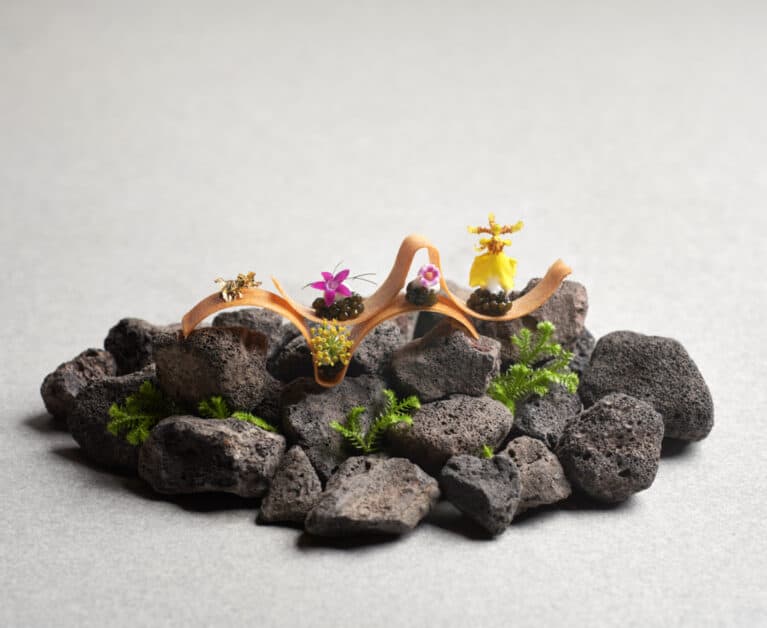Redefining Fine Dining in Singapore: How Some Fine Dining Restaurants Are Putting Relaxation Over Rules

PUBLISHED February 17th, 2022 05:00 am | UPDATED February 22nd, 2022 11:39 am
Not so long ago, one synonym for fine dining was ‘white-tablecloth restaurants’. Think Western-style fine dining and a whole medley of paraphernalia comes to mind: silverware changes with every course, dainty tasting menus, a formal air that some might call elegant and others, stuffy.
Yet at Rosemead, the Jigger & Pony Group‘s latest foray into fine dining, exactly none of these hallmarks apply. In place of multi-course menus, we get hearty sharing plates served on rustic wood tables. Instead of stately airs, the ambience is so relaxed that loud, lively chatter fills the space most evenings. It’s a far cry from the classic picture of a high-end dining restaurant, to the point that it sparked a debate during our meal here: what really defines fine dining today?

“Our definition of fine dining is expanding, not only in Singapore but worldwide,” observes Rosemead’s Executive Chef David Tang. Rosemead is among a brave new wave of upscale restaurants in Singapore breaking the template of haute cuisine – one that traces its roots to royal chefs-turned-restaurateurs for the elite in post-French Revolution Paris. Rewriting the rulebook, these new-age restaurants are putting comfort over etiquette, flavours over frills.
Relaxation Over Rules

At the heart of this shift is a newfound focus on relaxation – or, as the Michelin-starred table65 terms it, making fine dining fun. This takes shape through a laidback style of hospitality, a space designed for cosiness, and plenty of witty banter. “Our setting is very casual – you’re sitting round a chef’s counter, you can get up close with the chefs in the kitchen, there’s a chance to banter and crack jokes,” says Richard van Oostenbrugge, chef-owner of table65. “A lot of young people don’t get excited about stiff dinner service in a formal setting; we provide a different experience.”
Dubbing its experience ‘fine-casual’, table65 prides itself on paring away stuffy formalities and focusing on flavour. That means a home-style open kitchen where chefs plate up whimsical works of art, along with personalized service that stays “fun and chill”. Taking a cue from casual dining, the cutlery is tucked into a built-in drawer at each seat. Forget fussy silverware settings – guests can simply reach in and help themselves.
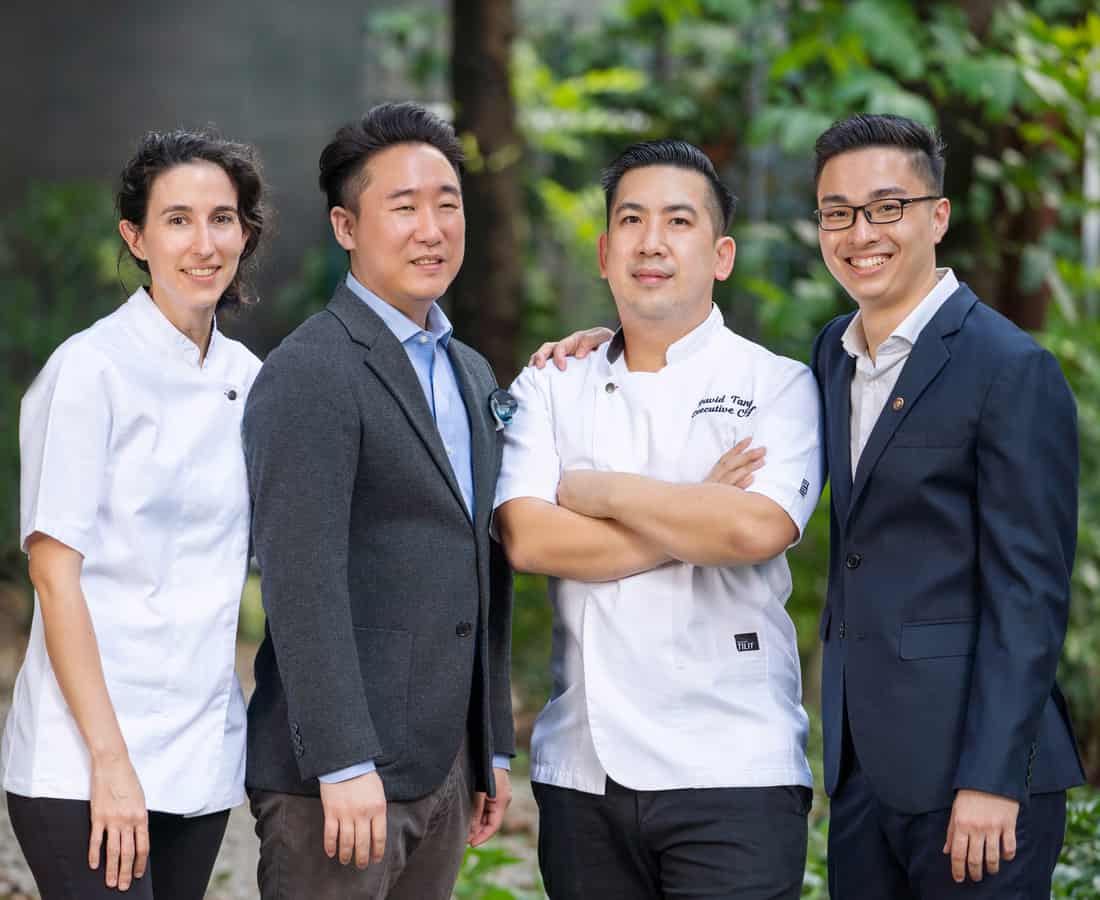
Relaxed hospitality, however, doesn’t equate to lax – indeed, it can call for enormous work behind the scenes. At Rosemead, the hospitality team aims to tailor the experience to each guest’s comfort – which means adapting and even breaking ‘rules’ as need be. “If someone’s here for an intimate date, they’d want a type of experience that’s different from people coming in for a loud, festive birthday celebration,” explains James Moon, General Manager of Rosemead. “We go to great lengths to cater to both at once, from how often we check in on guests to how much we even explain dishes when presenting them.”
Tableside service – a hallmark of high-end dining – is de rigueur for certain dishes, but if diners prefer to skip the flourishes, Rosemead is happy to oblige. “For us, having guests enjoy is much more important than pushing them to enjoy in a specific way,” James says. Even the seating is thoughtfully planned to put guests at ease. “Rosemead has a very different vibe depending on where you’re seated. For instance, we have a table with a loveseat for sitting side-by-side, and we try to seat couples there to people-watch, rather than a business dinner where you may want to be face-to-face.”
Playing With Flavours
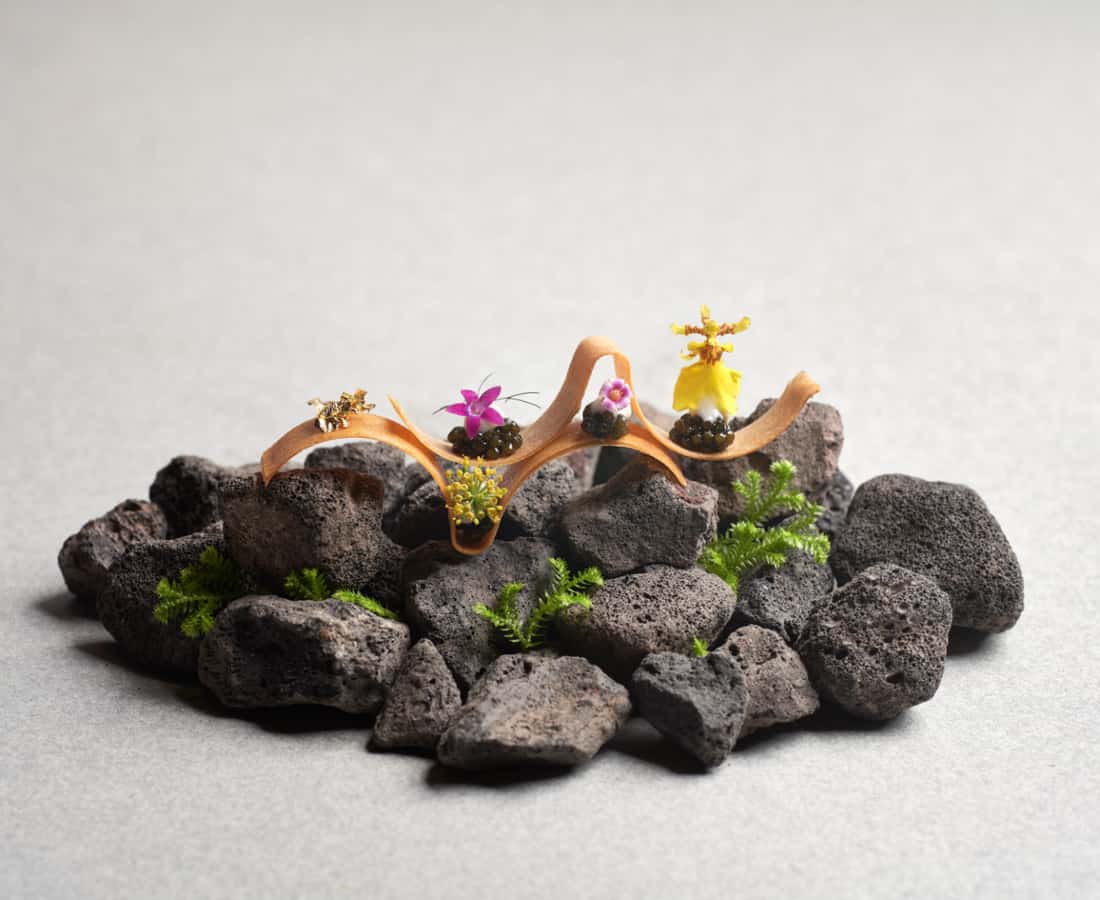
If fancy airs no longer make fine dining, what does? One answer lies in a renewed focus on culinary creativity. Fine dining restaurants have always been trendsetters in the kitchen, of course, but today’s cutting-edge concepts take pride in pushing flavour boundaries with ever more flair and fun.
Take Chef Jason Tan’s recent venture Restaurant Euphoria, where the mother sauces of French haute cuisine get what he dubs a ‘Gastro-Botanica’ overhaul. Or Preludio‘s rendition of ‘author’s cuisine’, which rejects geographical bounds in favour of giving the chef free rein to play with colours and textures – resulting in startling creations like an all-monochrome menu.

At table65, the fussy ceremonies of fine dining give way to free-spirited gastronomic theatre. The food itself is quite the spectacle – as Chef van Oostenbrugge’s iconic transparent Apple can attest to – but this is daringly amped up by visual projections that transform your dish into a light show. It’s clear that in concert with a relaxed vibe comes greater room for gastronomic fun. “We strive to serve our guests a world-class meal,” he says, “while letting them have a good time throughout.”
Another touchstone at the heart of many fine dining restaurants today is seasonality. Seasonal eating is hardly a new practice – humankind has done it naturally throughout history – but peak freshness has come to be a mark of excellence for top restaurants, especially in season-less Singapore. Rosemead, for one, is raising the bar on seasonality through its Californian ethos. Not only will the à la carte menu shift with the seasons, a dish you have one day might look different the next, depending on the produce in Chef David’s pantry.
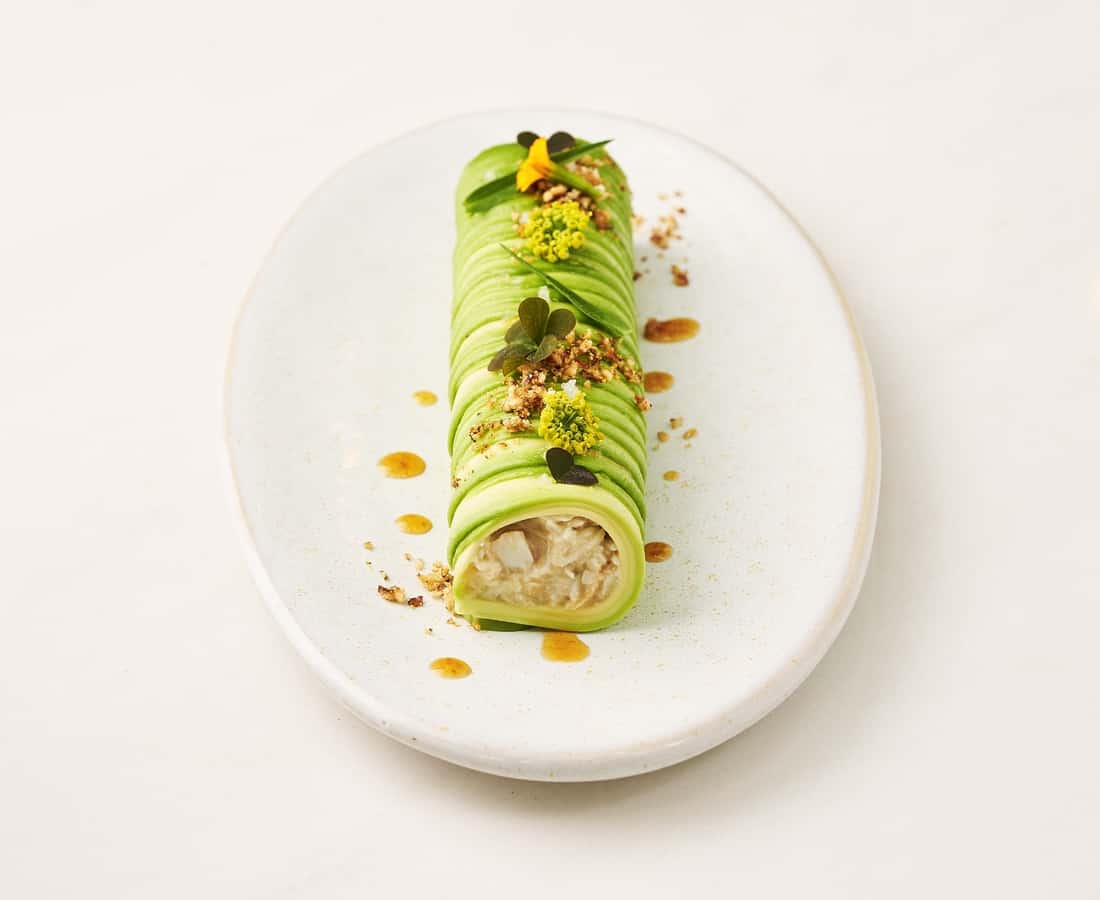
“My culinary background is driven by Californian cuisine,” Chef David shares. “Looking at the history of fine dining, it was designed for the wealthy of late-18th century Europe, with grand restaurants offering table-side service, multi-course menus, white tablecloths, and the like. Fine dining first arrived in the US East Coast via New York City, with restaurants like Delmonico’s boasting a thousand-bottle wine cellar. All these trappings still influence fine dining today, even in Singapore.”
In contrast, Rosemead seeks to open up definitions of fine dining through the grassroots-driven approach of the US West Coast. “The Californian ethos is about celebrating the land and embracing what we have – and we’re taking a similar approach with Rosemead. It’s a state of mind driven by local and sustainable ingredients; it’s paying attention to seasonality and maximizing natural flavours. In the fine dining context, this means building a trusted network of local and international producers as we source for the best ingredients available.”
Keeping It Casual
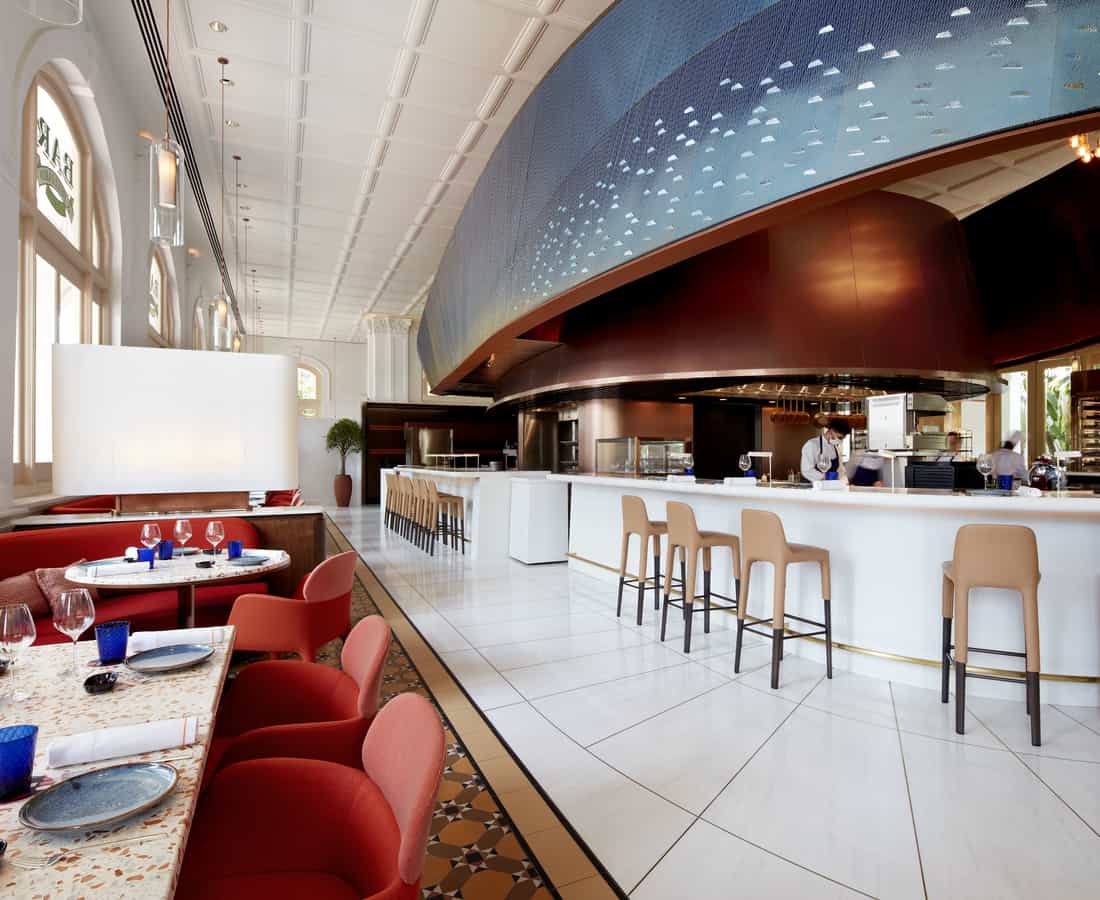
Casual vibes and sophisticated cuisine: it’s clear that this makes a winning formula for today’s gourmets. In a sign of the times, the past year has seen chefs long celebrated for fine dining in Singapore venturing into casual, accessible concepts. Best known for his three-Michelin-starred dining destination Odette, Chef Julien Royer made waves last November with the launch of Claudine – a ‘neighbourhood’ French restaurant delivering homestyle cooking with the “precision of a fine dining establishment”.
Then there’s culinary legend Alain Ducasse, otherwise known as the French chef with the most Michelin stars in the world. While the celebrity chef has made his name through haute cuisine destinations like the chandelier-decked Alain Ducasse au Plaza Athénée in Paris and the white-tableclothed Le Louis XV in Monaco, he’s dabbled in more accessible concepts of late. Last September, he launched his plant-based ‘canteen’ Sapid in Paris; around the same period, his freshly rebranded OSTERIA BBR by Alain Ducasse (formerly BBR by Alain Ducasse) reopened in Raffles Hotel Singapore.

In Italy, an osteria refers to a place serving simple food and wine. While ‘simple’ hardly describes the smartly stylish OSTERIA BBR, the name change reflects a focus on keeping the ambience casual and relaxed. “We eschewed white tablecloths in favour of terrazzo tabletops for a breezy feel,” shares Frederic Serol, Executive Assistant Manager of Food & Beverage at Raffles Hotel Singapore. The staff, too, are dressed down in lively burnt orange and denim blue. “Instead of black leather shoes, which are commonly part of the attire for front-of-house teams in many fine dining restaurants, we chose white sneakers.”
There’s no doubt that classical fine dining will always have its place in the gourmet scene. “There will always be an audience for it,” observes table65’s Chef van Oostenbrugge. But as ever more restaurants play with the old rules, fine dining is transforming from a category into a spectrum. And hey, that’s a win for diners of all stripes.
Top Image: table65

